Cardboard Computer
Workshop
How do computers work on their fundamental levels? Can we build communication networks from scratch – with cardboard, rubber bands and rope? How do analog metaphors for Drag & Drop look like?
Those were some of many questions, which I asked the design students at the University of Art and Design Offenbach, when I was invited to teach a one week workshop at the class for Electronic Media. Our aim was to answer those questions with limited materials: We had cardboard, welding wire, glue, rope, rulers and cutting knifes available. And we tried to build computers – or some of their parts – out of that material. The video on top is a hispeed slideshow of the workshop. And below you can find descriptions of the students' projects.
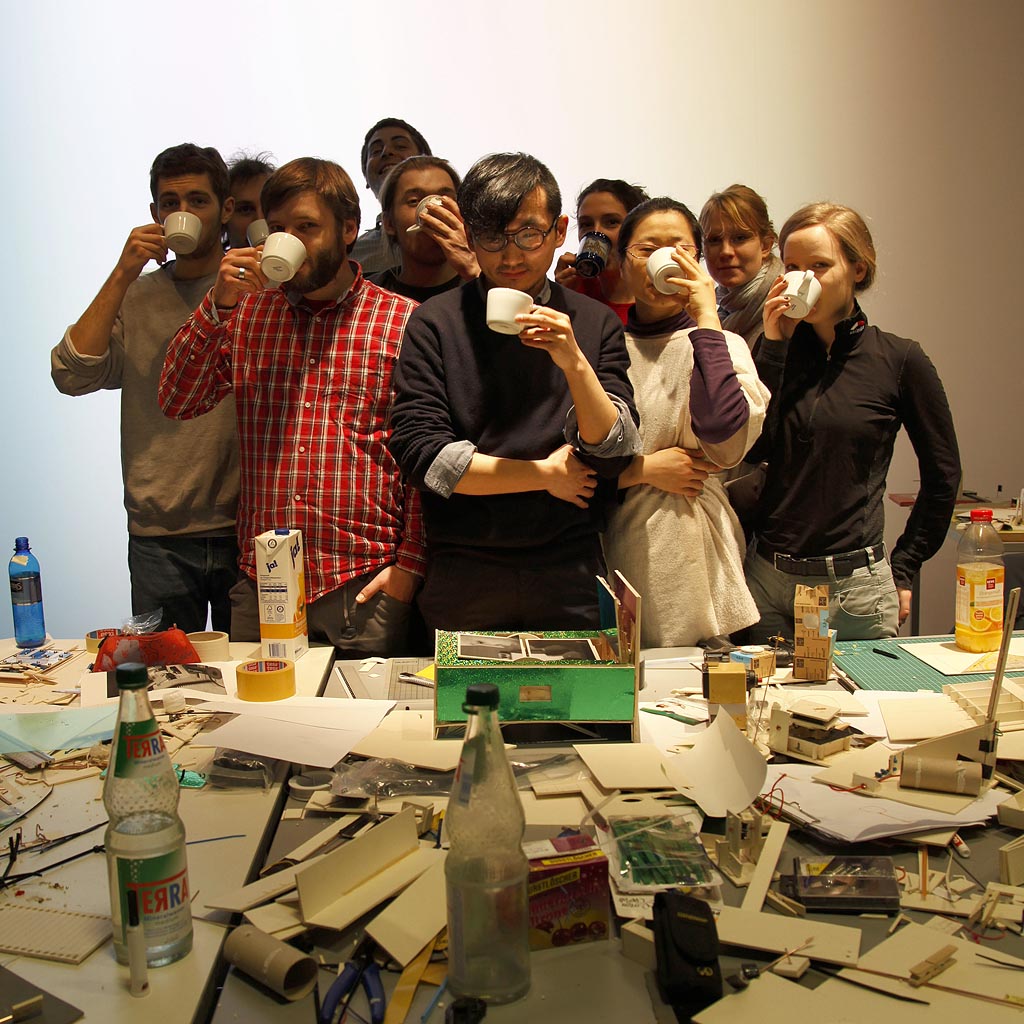
Masterclock
The core part of any digital computer is a clock which synchronizes all logic processes and communications. Tilmann Aechtner built this beautiful time piece. It uses rolls of adhesive tape as weight. On a connected barrel display, you can watch the mechanism counting.
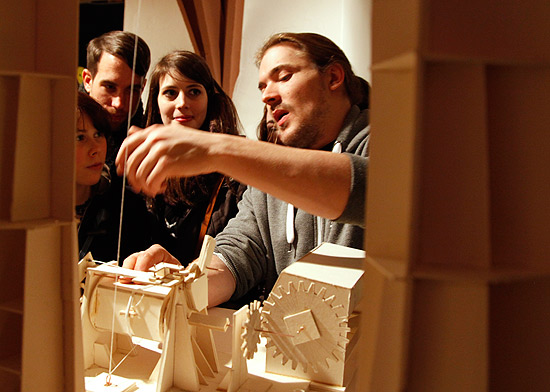
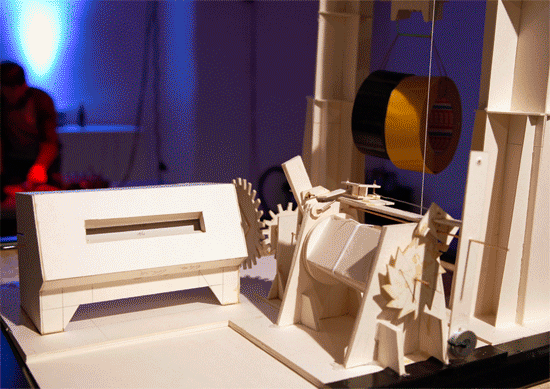
Mr. NAND
Carolin Liebl and Lisa Hopf were interested in fundamental digital logic: Over several design iterations, they managed to build a very clever and well working NAND gate. It compares two binary inputs and calculates one binary output. Several of those mechanical gates in combination can be used to build a complete computer! Although a working computer out of cardboard would probably become a bit large. In addition to their NAND gate, Carolin and Lisa also came up with concept drawings for NOT, OR, NOR, XNOR, and an AND gate mechanisms.
Cardboard logic FTW!
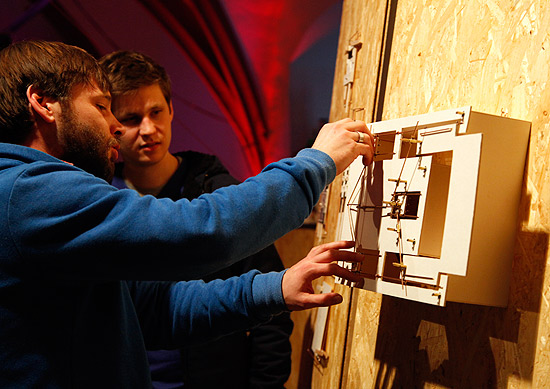
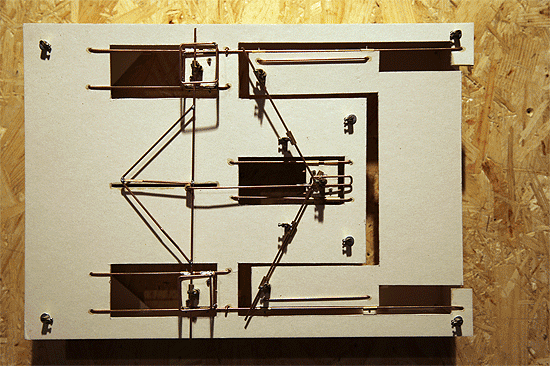
Speedway PRO 1000
Jonas von Ronström brought some good old arcade fun to our workshop: He built a racing game which worked pretty well – although the steering turned out to be a bit wobbly. No problem for Jonas, though. He quickly adapted his concept to the behavior of his machine and named the game “Speedway PRO 1000”, where the “PRO 1000” stands for the German “Promille” (permille in English), the unit for blood alcohol content. His drunken driving simulator was definitely a hit at our final party!
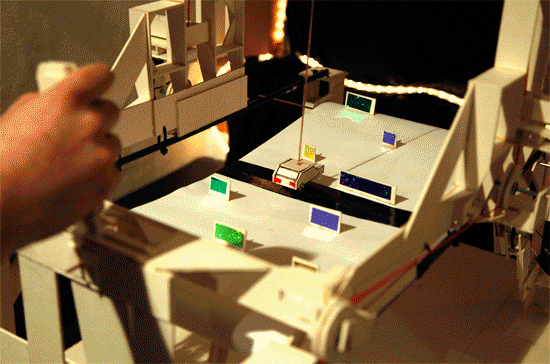
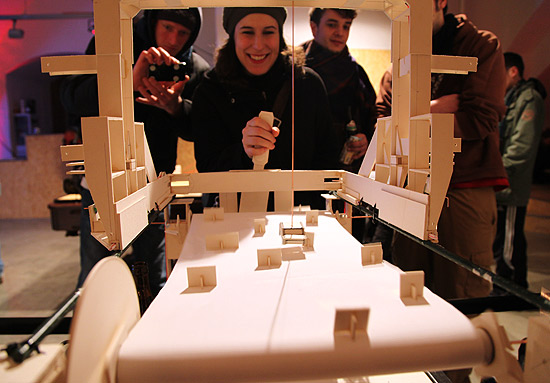
Ab geht's (“Let’s go!”)
Anne Euler and Nikolas Schmid-Pfähler challenged themselves by building a complete communication network with four stations and an information distribution knot. Each station consisted of rotary dial to select one receiving station, a signal transmitter and a signal receiver. All of the stations were connected to a central knot via ropes. This central information distribution knot transmitted the rope pulling forces from the transmitters to the selected receivers, pretty much like an old school Strowger switch. “Let's go!” was the most ambitious project in the workshop. And despite some minimal mechanical problems, it worked well for remotely ordering beer at the bar!
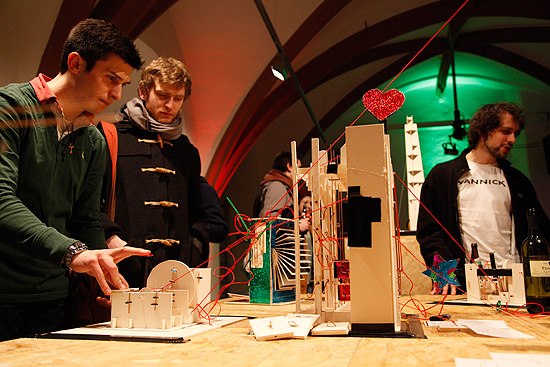
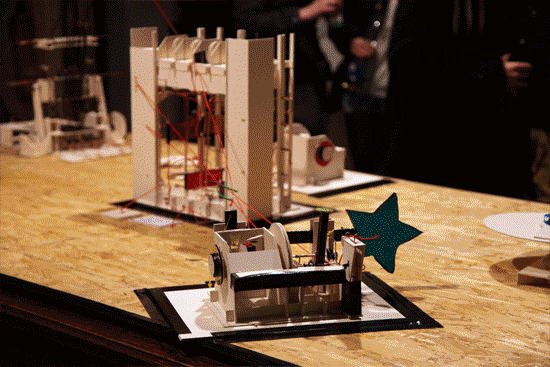
Joint
Joonsun Kim built this minimalist Angry Birds like shooting game. A counterbalanced collapsible shelf construction mimics the Angry Birds physics engine. With a slingshot and ping pong balls, you could shoot on targets inside the shelf.
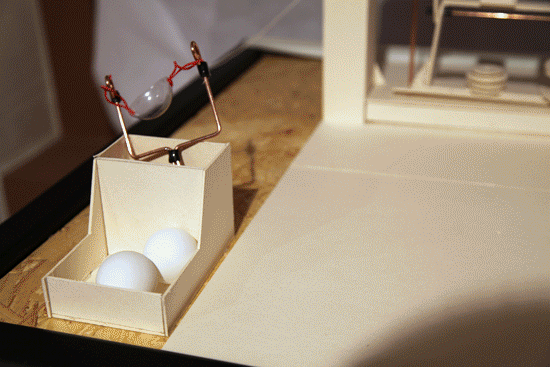
Arbeit (“Labor”)
A cardboard computer is not much worth without an appropriate data storage device. Philipp Medrala was fascinated by punch card technology and decided to build his own crank operated punch card reader!
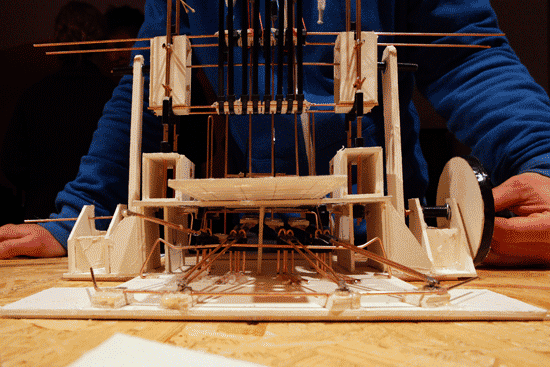
Cloud Player
Shaowei Jia was interested in wireless information and energy transmission. His “Cloud Player” consisted out of a hifi amp and induction coils. The visitors were invited to connect their smartphones to the minijack, play music, and watch the LED's blink to the beat.
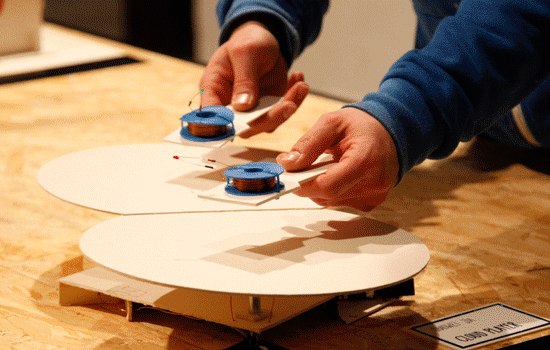
That's it for the students' projects. I've also built a machine during the workshop, a cardboard plotter, which I've documented separately on its own webpage. However, here's a photo:
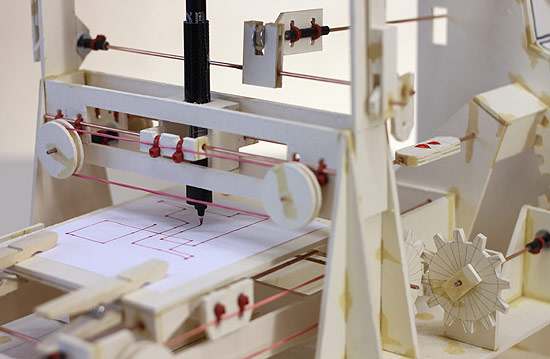
Special thanks
I want to thank all the students for working day and night in this workshop! And I also want to thank Professor Heiner Blum for inviting me to teach at the HfG Offenbach.